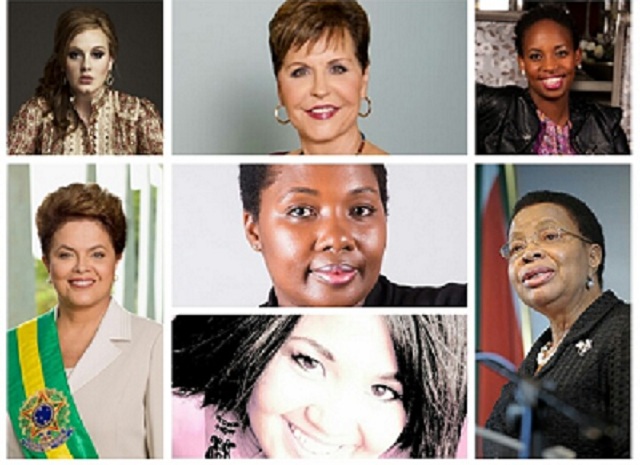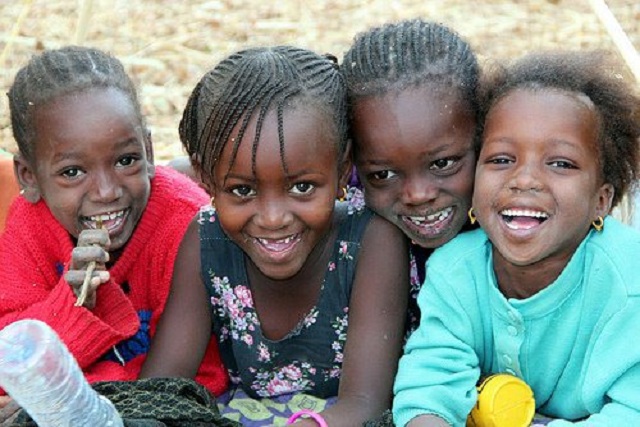2016 International Women’s Day theme: ’Pledge for parity’

Agnes Magunje
A woman is like the ‘Power House’ her energy flows to all areas of life, from the children, the father, her work, and community.
Woman – the beginning of humanity – conceives and gives birth to life. We need to celebrate her on International Women’s Day and very other day.
This year’s International Women’s Day theme, “Pledge for Parity” helps us to continue with our fight to make a woman’s mark in a man’s world.
Women’s rights are human rights and are key to determining economic prosperity. Increasing the participation of women will lay a foundation for economic prosperity.
International Women’s Day, originally called International Working Women’s Day, is celebrated on March 8 every year. In different regions the focus of the celebrations ranges from general celebration of respect, appreciation, and love towards women to a celebration for women’s economic, political, and social achievements.
Parity is the quality or state of being equal or equivalent and this is our hope for our society.
The Global Gender Gap Report 2014 by the world Economic Forum concludes that it will take another 81-years for the world to close the economic gender gap and realise the result of growth benefits.
However, there are actions that can be taken now to accelerate the pace of progress. Zimbabwe has come up with a Gender National Policy which seeks to achieve a gender just society where men and women enjoy equality, equity and participate as equal partners in the development process of the country.
It identifies eight priority thematic areas, which are: constitutional and legal rights, economic empowerment, politics and decision making, health, education and training, gender based violence, environment, media and information communication technology.
The 2011 Human Development Report revealed that the Gender Equality Index (GII) is at 0.583 compared to an ideal zero.
This indicates the generally low status of women with respect to reproductive health, empowerment, access control and ownership of economic resources and economic opportunities and participation in decision-making.
The area of education cannot be ignored. The Net Enrolment return for boys and girls reached parity at 91 percent in 2009.
However, tertiary and university enrolments are still below parity targets.
Women and girls are still lagging behind. The issues of early marriages and school dropouts including high tuition fees affect the number of women that proceed to higher education.
According to the Ministry of Higher and Tertiary Education 2011 statistics, although female university enrolment increased from 23 percent in 2006 to 41 percent in 2011 the figures fell below the 50 percent target.
More should be done to increase the figures. Women should be offered scholarships and issues of pregnancies in students should be addressed.
Employment and empowerment of women is a potential turn around for women. However, the World over, women occupy a greater percentage of the informal sector where there are little benefits and hard labour, for example women in agriculture work long hours and very hard in tough conditions for little pay.
The Zimbabwe Demographic Health Survey 2010-11 shows that 37 percent of women compared to 62 percent of men are formally employed. We need decent jobs for women and good pay. Real income of women is three times less than that of men.
Parity in access to benefits and opportunities in trade, entrepreneurship, wage, employment and control of productive resources and minerals will liberate women and change their positions in society.
This will indeed empower women and help the economic growth of our nation. For it is said: if you empower a woman you empower a nation.
Latest statistics on The Land Reform Programme from the University of Zimbabwe reveal that women constitute 18 percent of beneficiaries under the A1 and 12 percent under A2 falling short of the gender parity ideal.
Lack of control and access to resources makes it hard for women to own any form of assets even credit is very difficult for women to access due to lack of collateral.
Institutions that fund agriculture do not benefit women at large because of the needs and criteria of requirements to access the loans, capital or credit facilities.
Equipment such as tractors and harvesters are given to men and are registered in the man’s name. Women hardly own anything.
Property rights and inheritance issues should be clearly stated to also avoid constant squabbles over inheritance between women and extended families.
Our new constitution addresses the issue of ownership and participation of women. The 50:50 representations in decision making positions, in commissions and other elective bodies is a key equality provision of the new constitution.
Women are encouraged to take up positions in the political and public sphere, but the experiences that women go through in those environments, makes it a very hard turf. There is a lot of sexual harassment for female Members of Parliament and ministers.
Those who live out of the capital city have to do a lot of travelling and are always away from family. This poses a great danger to relationships, hence the importance of having issues of childcare facilities at the work place addressed.
It is necessary for women to look after their children while they are at work. Gender-Based Violence is also on the increase but the good thing is that more cases are being reported than before. Health care is also expensive for women.
Pregnant women in domestic service are more likely to die from complications. Both Cervical and Breast Cancer are on the increase and are causing more deaths in women.
Again poverty and lack of resources endanger a woman’s life as access to treatment is expensive. The state should also see how best a fund can be availed for Cancer treatment.
Most of the issues affecting women do not receive good media coverage. Women’s stories are hardly told, heroines receive less honour.
Media and information communication technology planning is a critical commitment, hence there has to be serious efforts to engender policies that ensure universal access and equity in ownership and decision making in media and Information Communication Technologies if parity is to be attained.
Media has to view women more seriously. Media coverage issues related to gender is only four percent of content and women in politics voices in media comprises of a mere five percent. Women need a better platform to be heard and to be visible.
Information is power and without information women are always lagging behind. Print media is not available in all areas for example in rural areas where 71 percent of the population are women.
The media forum should address the issues of language, sexual harassment, patriarchy, cultural norms, and lack of income, education and poverty, among women.
These are the barriers that prevent women from utilising media as a development tool.
Media will become a useful tool of development if it reaches the right targeted audiences.
In issues of development we cannot exclude climate change. The use of electricity and water becomes more crucial for women than it can be for men.
There is a need therefore to consider taking a gender approach in design and implementation of policies on how to adopt and mitigate the effects of climate change and how men and women can contribute to and benefit from a green economy.
This is crucial to effectively address the needs of both men and women in eradicating poverty and hunger as well as promote gender equality and ensure environmental sustainability.
The participation of women in climate change negotiations processes at local, national and global levels will ensure that their needs, perspectives and expectations are equally taken into account and made a reality.
In conclusion to attain gender parity, constitutional and legislative provisions on gender parity should be implemented and targets should be clearly set at national, international, regional and global stage.
Equality and equity in access to economic opportunities for men and women, supportive environment for gender parity in politics and decision making positions and the promotion of health service delivery need to be a priority.
Access to education for boys and girls in all levels of education and training opportunities for men and women should be availed to all in both urban and rural sectors.
In the areas of social health there should be reduction of all forms of gender based violence and an increase of gender responsiveness of the environment and natural resources management strategies.
Women should also be part of big solar energy generation projects, and there should also be promotion of equal access and control of ownership of media and ICTs by men and women to enhance development across all sectors.
Institutions and organisations should be encouraged to carry out yearly gender audits and sensitisation workshops to keep the checks and balances on parity.











Comments